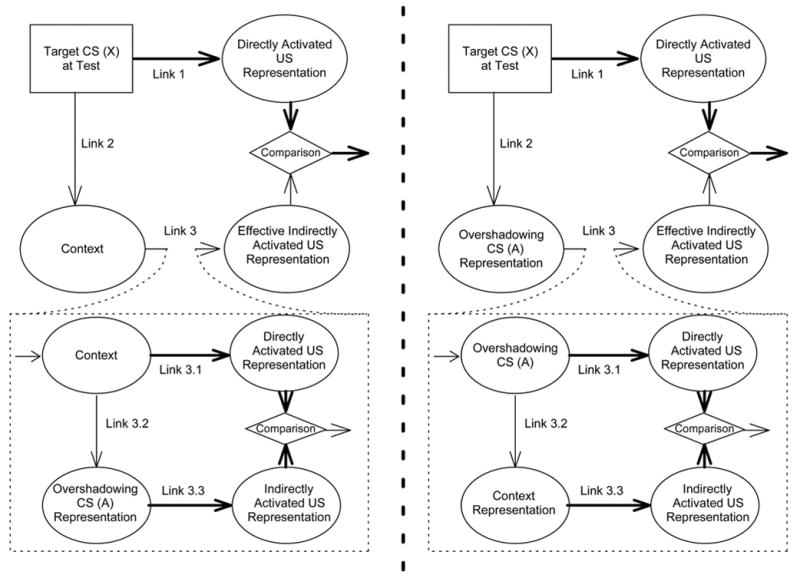Figure 2.

An extended comparator hypothesis account of counteraction between overshadowing and the outcome-alone exposure effect. Left: The first-order comparator effect of the context. Right: The first-order comparator effect of the overshadowing stimulus. The two comparator processes on the left and the right work simultaneously at the time of testing. The thickness of each arrow represents the strength of the association. The higher-order comparator effect on Link 2 is omitted because it is negligible for the conjoint treatment condition.
